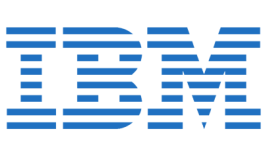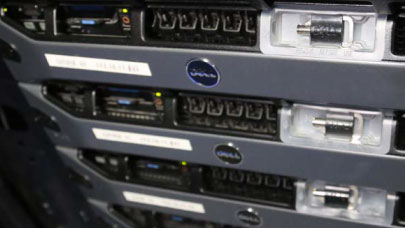However, we cannot explain everything by generational behaviours…
No, it is just an example. The main reason for the second transition in 2011 from disk to tape, is the coincidence of three major events: first, an organic market upheaval, the second is a strong political event, and finally a technological innovation capable of solving the first two points.
The organic market upheaval is obviously the explosion in the creation of digital data. The shift occured in the second half of the 2000s.
We can imagine that the explosion of the creation of new digital data is not the same for everyone…
Ok, but somehow, I do not agree with you. We obviously see that there are industry sectors experiencing impressive growth in terms of storage capacity such as, among others, medical, media and entertainment, scientific research, remote sensing, satellite image recording, or obviously the cloud and data centre environment. To me, the highlight is not about such users. The most spectacular in my eyes is the typical case of a company, even if small or average sized, which by nature is not supposed to experience strong organic growth in terms of storage capacity, but that will use a new computer application which will dramatically change the amount of data they will have to store. I know the case of a town hall that will digitize 3D plans of the sewers, which will increase its storage requirements by 30%. Another example is a cultural centre that will digitize an incredible amount of their paper archive, which will ultimately double up its storage capacity etc. it is often small advances in everyday business life that will constitute this famous global growth from 4.4ZB worth of data created in 2013 to 44ZB created in 2020… We’ll have to absorb all this mass of new digital data and store it: in the present state of things, hard disk will not meet future user requirements without costing them an absurd amount of money. On the other hand, we know that the Barium Ferrite tape technology can produce a single tape cartridge with a capacity of 220TB. We already know the roadmap of LTO tapes until 2024-2025 with tapes that will provide native capacities beyond 40TB.
Another major event that could have been a decisive factor in favour of tape is the booming of regulations and legal obligations with regard to the long-term retention of data…
Unfortunately, on one side, large companies are aware of the risks they face and know how to shelter. We are facing, on the other side, a dramatic situation with regard to SMEs. Yet we are well aware of the risk: it is very easy to access regulations related to long-term data retention. I have put together a few examples. Regarding the company’s daily operations, the Article L.134-2 of the Consumer Code stipulates that one must retain and archive sales contracts of values above 120 Eu that are concluded electronically for 10 years from delivery. The Article 2227 of the Civil Code requires the archiving of contracts for the acquisition or sale of real estate and land for 30 years! In the medical field, we must keep medical records in case of hospitalization for 20 years (R. 1112-76 code of public health). We must retain blood transfusion records for 30 years (Article R. 1112-2 of the Code of Public Health). We could go on like this for hours: schools must keep medical and student records for 20 years, nursing records for 30 years and construction of facility records with maps for 30 years for any contract concluded before 2008. Deciding not to secure this type of data on a tape is equivalent to sitting on a time bomb. It is not the job of hard disk to resolve such demands. Each technology comes with its own features and benefits: disk is a receptacle without which we can not use a PC. It is used to make daily backups, and save data in the very short term. The nature of disk does not allow it to last 10 years, not even 5. On the other hand, long-term data retention is the job of tape technology. Points of contention can always be found in the comparison between disk and tape. Tape is faster than disk, but a user can decide to spend large amounts of money so that disk’s writing speed comes as comparable to tape’s. It is extremely expensive, but physically feasible, although absurd. In contrast, there are two points on which no amount of money could ever fill the gap between disk and tape: the data integrity and the long-term retention of data. That said, we must clearly explain that all tapes are not equal.
Are you comparing LTO tapes to old tape formats such as DLT tapes?
No, I am comparing LTO tapes with LTO tapes. What I am saying is that all the LTO brands available today are not on the same level when it comes to quality. In 2011, we witnessed the emergence of tapes produced with this new technology called Barium Ferrite, which has, without doubt, revolutionized the world of data storage. Fujifilm manufactures these tapes, but we can also find them with other vendors such as IBM, Dell, Quantum, or Qualstar. The first ever LTO tapes manufactured with Barium Ferrite were LTO6 tapes. Barium Ferrite is used for 60% to 70% of the worldwide production of LTO6 (2.5TB – 160MB/s native – buffer of 1GB). All high capacity and performance enterprise tapes are manufactured with Barium Ferrite: the 3592 IBM and Oracle T10000. The gap in performance and reliability between Barium Ferrite and other tapes is such that we can not even speak of the same product : writing speed, recording stability, write error rate, loss of data over time (archiving lifetime), and even the duration of the use of a drive.
© HPC Today 2024 - All rights reserved.
Thank you for reading HPC Today.






























